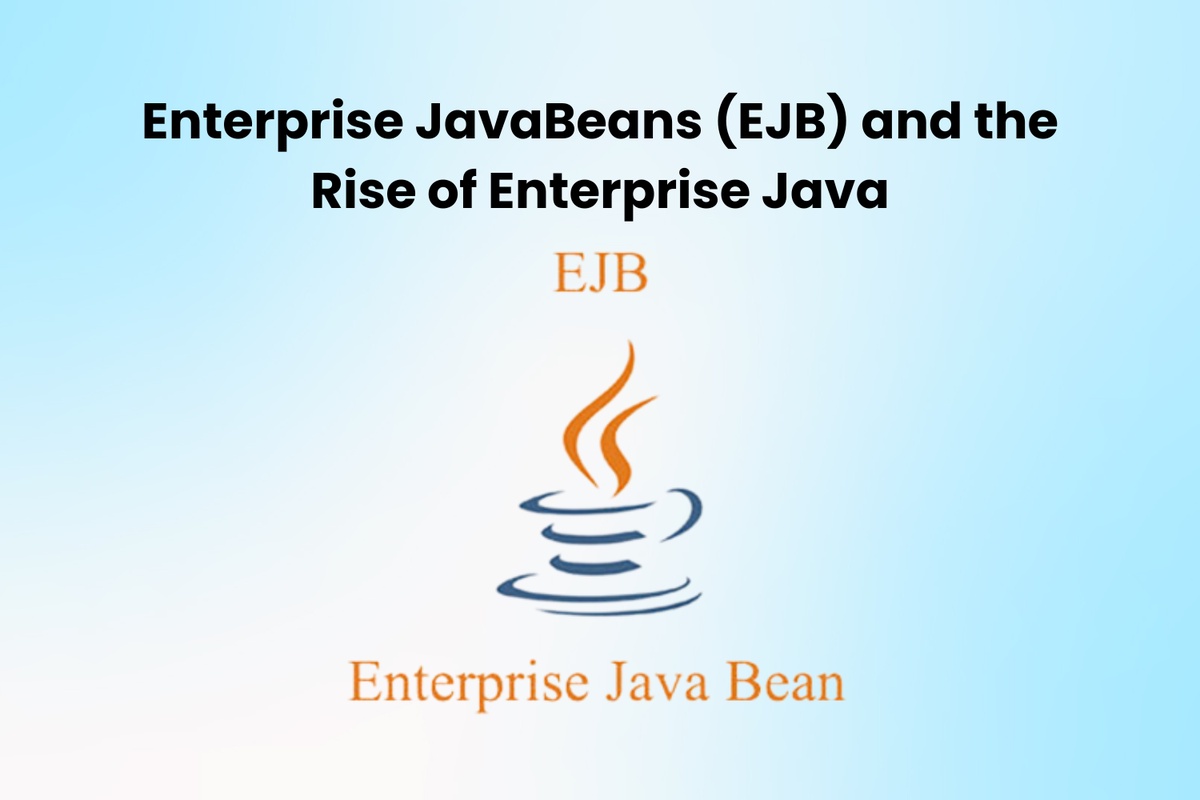In enterprise-level software development, the History of Java has played a pivotal role in shaping robust and scalable solutions. Over the years, the evolution of Java has seen the emergence of powerful technologies, and at the forefront of this transformation stands Enterprise JavaBeans (EJB). As we delve into enterprise computing, it becomes apparent that EJB has been a cornerstone in the development of sophisticated and scalable Java applications.
Understanding the Essence of Enterprise JavaBeans (EJB)
Enterprise JavaBeans, commonly known as EJB, represents a powerful component model for the development and deployment of enterprise-level applications. The journey of EJB began with the growing demand for a standardised approach to building scalable, distributed systems. In the ever-evolving history of Java, EJB emerged as a key player, providing a robust infrastructure for creating and managing enterprise-level Java applications.
Key Features of Enterprise JavaBeans
Inherent Scalability
At the core of EJB lies its ability to deliver scalable solutions effortlessly. Leveraging the distributed computing paradigm, EJB enables the development of applications that can seamlessly scale across multiple servers, catering to the increasing demands of modern enterprises.
Transaction Management
One of the defining features of EJB is its comprehensive transaction management system. In the intricate tapestry of enterprise applications, transactions play a critical role. EJB simplifies the complexities associated with managing transactions, ensuring data integrity and consistency.
Security Mechanisms
In the era of heightened cybersecurity concerns, EJB shines with its robust security mechanisms. From authentication to authorisation, EJB provides a layered approach to securing enterprise applications, safeguarding sensitive data and ensuring compliance with industry standards.
Component Reusability
EJB promotes the concept of component-based development, facilitating the creation of reusable software components. This not only streamlines the development process but also enhances maintainability by allowing developers to leverage existing components in new projects.
Distributed Computing Capabilities
EJB is designed to operate seamlessly in a distributed computing environment, enabling the development of applications that can span multiple servers and locations. This distributed nature enhances fault tolerance and ensures high availability, crucial aspects in the world of enterprise computing.
Evolution of Enterprise Java: EJB 1.0 to the Modern Era
EJB 1.0 - The Foundation
The inception of EJB can be traced back to the late 1990s with the release of EJB 1.0. This version laid the foundation for the development of enterprise-level applications, introducing concepts like session beans and entity beans.
EJB 2.0 - Maturing with Standards
As the demand for more sophisticated enterprise solutions grew, EJB 2.0 emerged to address the shortcomings of its predecessor. This version introduced improvements in terms of programming models, simplifying the development process.
EJB 3.0 - Embracing Simplicity
With the release of EJB 3.0, the landscape of enterprise development witnessed a paradigm shift. EJB 3.0 focused on simplicity and ease of use, introducing annotations and dependency injection, making it more developer-friendly.
Modern EJB - A Robust Ecosystem
In the current era, EJB continues to evolve, aligning with the advancements in the Java ecosystem. Modern EJB frameworks offer support for microservices architecture and cloud-native development, ensuring its relevance in contemporary enterprise scenarios.
Challenges and Solutions in EJB Implementation
Enterprise JavaBeans (EJB) bring unparalleled power to the realm of scalable enterprise solutions, but not without its challenges. As we delve into the intricate world of EJB implementation, it's essential to address common hurdles faced by developers. From complexities in configuring containers to managing transactional boundaries, this section explores challenges and provides insights into effective solutions. Let's unravel the intricacies of EJB implementation and how developers can overcome hurdles to unlock the full potential of this robust Java technology.
The Future of Enterprise JavaBeans
As we navigate through the history of Java and its evolution with EJB, the future appears promising for this stalwart of enterprise development. The adaptability of EJB to modern architectural paradigms positions it as a key player in the ever-changing landscape of enterprise computing. With continuous enhancements and the community's commitment to innovation, Enterprise JavaBeans remains a robust choice for developers seeking scalable, secure, and maintainable enterprise solutions.
In Conclusion
The history of Java has witnessed the rise of Enterprise JavaBeans as a fundamental force in the development of scalable enterprise solutions. From its early versions to the modern era, EJB has evolved to meet the dynamic needs of the industry, providing a reliable and flexible platform for building complex and distributed systems. As the journey of enterprise development continues, EJB stands as a testament to the enduring power of Java in shaping the future of scalable and sophisticated software solutions.


No comments yet